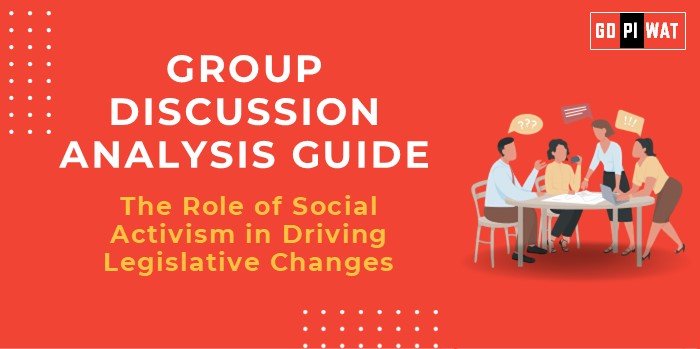📋 The Role of Social Activism in Driving Legislative Changes
🌐 Introduction to the Role of Social Activism in Legislative Changes
Social activism has historically been a catalyst for legislative transformation, mobilizing public sentiment to effectuate systemic change. From civil rights to environmental laws, its impact resonates globally.
Social activism involves organized efforts to address societal issues through advocacy, public awareness, and direct action. It has shaped history, from the abolition of slavery to LGBTQ+ rights. In India, movements like Chipko, Nirbhaya, and the recent Farmers’ Protest highlight its transformative potential.
📊 Quick Facts and Key Statistics
- 🚜 Farmers’ Protest (2020-2021): 250+ million participants, leading to repeal of controversial farm laws.
- 🚺 Nirbhaya Case (2012): Triggered stricter anti-rape laws under the Criminal Law (Amendment) Act, 2013.
- 🌳 Chipko Movement (1973): First major environmental protest, influencing the Forest Conservation Act, 1980.
- 📈 Global Trends: 87% of surveyed youth in a UNDP report believe activism significantly influences policy changes.
🏗️ Stakeholders and Their Roles
- ✊ Activists & NGOs: Initiate campaigns, provide research, and mobilize public opinion.
- 🏛️ Government & Judiciary: Formulate, amend, or repeal laws based on public pressure.
- 🌍 Citizens: Amplify movements through participation and voting behavior.
- 📰 Media: Shapes narratives and holds power structures accountable.
- 🏢 Corporates: Respond to activist demands through policy compliance or CSR initiatives.
🏆 Achievements and Challenges
🎉 Achievements:
- 🚺 Strengthened Women’s Rights: Campaigns like MeToo brought widespread awareness to workplace harassment.
- 🌳 Environmental Protection: Protests against coal mining in Aarey Forest, Mumbai, safeguarded green spaces.
- 🌈 LGBTQ+ Rights: Repeal of Section 377 in India marked a historic victory.
- ✊ Racial Equality: Black Lives Matter garnered global attention for systemic racism and police reforms.
⚠️ Challenges:
- 🚨 Suppression of Activism: Crackdowns, arrests, and curbs on freedom of expression (e.g., sedition laws in India).
- 🌐 Digital Divide: Marginalized groups often excluded due to limited internet access.
- 📰 Misinformation: Fake news and propaganda undermine legitimate movements.
🌎 Global Comparisons:
- 🤝 Success in Scandinavian Countries: Constructive dialogue drives reforms.
- 📵 Struggles in Authoritarian Regimes: Limited freedoms restrict activism.
- 🌍 Policy Impact: Greta Thunberg’s climate activism influenced EU Green Deal commitments.
🔍 Case Studies
- 🇮🇳 India: The Nirbhaya case led to amendments in criminal laws.
- 🇺🇸 USA: The Civil Rights Movement achieved the Civil Rights Act, 1964.
💡 Structured Arguments for Discussion
Supporting Stance: “Social activism creates a platform for marginalized voices and catalyzes overdue reforms in governance.”
Opposing Stance: “Excessive reliance on activism undermines institutional processes, risking populism over policy rationality.”
Balanced Perspective: “While activism drives change, the sustainability of reforms requires institutional backing and public accountability.”
🗣️ Effective Discussion Approaches
Opening Approaches:
- 📊 Statistical Impact: “In just two years, global climate protests mobilized over 6 million participants, proving activism’s legislative potential.”
- ⚖️ Contrast Approach: “While democracy thrives on activism, not all movements lead to tangible legislative outcomes.”
- 📖 Case Study Opening: “The Nirbhaya case illustrates how collective outrage can redefine laws.”
Counter-Argument Handling:
- ✔️ Reframe challenges as opportunities (e.g., use of digital platforms to counter misinformation).
- 🌍 Draw parallels with successful global movements to validate activism’s effectiveness.
⚙️ Strategic Analysis of Strengths and Weaknesses
- ✅ Strengths: Mass mobilization, democratic participation, global solidarity.
- ❌ Weaknesses: Risk of polarization, limited sustainability.
- 📈 Opportunities: Leveraging technology, global networks.
- ⚠️ Threats: Censorship, co-option by vested interests.
🎓 Connecting with B-School Applications
Real-World Applications:
Frameworks for corporate social responsibility or ethics courses.
Sample Interview Questions:
- 📊 “How do you assess the impact of social movements on businesses?”
- 🌎 “Can activism be an effective tool in international relations?”
Insights for B-School Students:
- 📘 Explore activism as a case study for strategic leadership.
- 🌍 Understand its role in stakeholder engagement.


